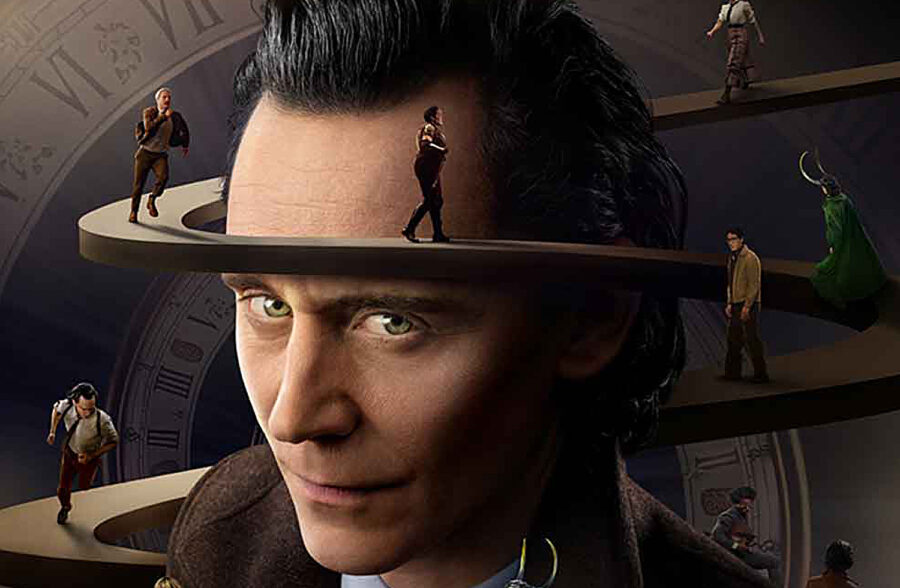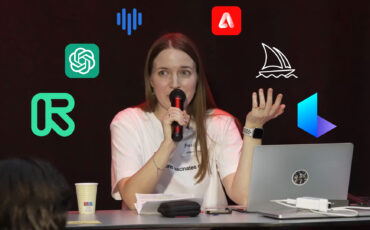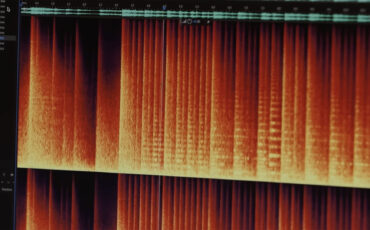
We all knew this was coming. For years, the general public has been trying to use generative AI to their creative advantage, while the business world has been scrambling to find a way to monetize it. At an investor’s meeting on Thursday, May 30th, the CEO of Sony Pictures Entertainment, Tony Vinciquerra, stated they plan to use AI as an “efficient” way to produce films for television and theaters. Let’s take a look at what this could mean for the filmmaking industry.
The first question during a Q&A portion of the Sony investor call was about AI. You can view the entire presentation on Sony’s Investor Relations website, and the Q&A portion starts at 2:53:36 with CEO Tony Vinciquerra and CFO Philip Rowley. “Industry-wide box office overall has improved from the pandemic but still has not fully rebounded to pre-pandemic levels,” Vinciquerra says in his presentation. So clearly, Sony (as well as other studios) will be grasping at straws in an attempt to make cheaper movies and maximize profits.
While no concrete goals or strategies are laid out, it was made clear that AI will be used, going forward, in their approach to making movies. Vinciquerra ends the question by hammering the point, “We will be looking at ways to use AI to produce both films for theaters and television in a more efficient way using AI primarily.” While AI can do a great many things, it can not (as of yet) make movies. So, let’s see what he may have meant and ways they can use AI to produce more efficient films.
“Written” by AI
The “G” in ChatGPT stands for “Generative.” It (and other similar models) can “generate” material based on data on which it has been trained. So in theory, one could use a text-based generative AI model to come up with movie ideas based on prompts by a user. It could even generate a script because it knows the proper formatting based on data scraped from the internet.
Adventure Filmmaking with Russ Malkin
One of many concerns over the use of AI, and something stipulated in the most recent contract ratified by the WGA, is that studios “cannot use AI to write scripts or to edit scripts that a writer has already written.” It was decided that AI was a tool to be used by writers, not as an entity to replace writers. An important distinction.
This is something specifically referred to by Vinciquerra in his presentation. “[Creatives] are very sensitive; in fact, we had an 8-month strike over AI last year, both actors and writers. That was one of the primary drivers of that strike.” He then goes on to say that the agreements from those SAG/WGA contracts, as well as an upcoming negotiation with IATSE, will define what the studios will be able to do with AI.
So, while a Development Executive or Writer can use AI to assist in the writing of a story or script, it can not be used to write an entire script or rewrite something a writer has already written. But how does using AI to help write make for a more efficient film? What is the benefit for the studio to use AI in producing films in a more efficient way?
“Executive Produced” by AI
Another aspect of Generative AI that may be useful to a production studio is charting successes and failures. Being able to predict successes would be a game-changer for movie studios. Movie studios are, in fact, a business.
For years, Executives have been chasing what they think audiences want to see. What they think will sell. But now they may have a calculator that can accurately predict (based on available data) what will bring audiences to theaters. What audiences will or will not respond to is something that can be tracked. Doing that monotonous, repetitive research is something that AI excels at and can be done in a fraction of the time it takes a human to do it.
So, is it a more efficient way of making films to pay Executives less and rely on AI more? It certainly would appear that way, but I don’t think I could get any human Executive to agree with me.
“Art Direction” by AI
There has already been controversy around using AI to produce posters and artwork for movies and TV shows. It is one thing generative AI has gotten quite good at. Some pieces of AI-generated art are virtually imperceptible as non-physically photographed or created by a human artist. Posters for Alex Garland’s ‘Civil War’ and Marvel’s ‘Loki’ Season 2 were, at least in part, created using AI.
Perhaps a more efficient way of making films is to cut back on paying artists by using AI to generate promotional materials for movies and series (of course, I am not actually suggesting this, nor am I an advocate of AI taking the jobs of humans; I’m merely speaking rhetorically). Or maybe, with the advent of Stagecraft technology and the LED Volume, you could use AI-generated backgrounds and landscapes in live-action photography. Anything normally created by an Art Department, whether it is Concept Art, Production Design, Props, Costumes, etc., could all theoretically be generated by AI.
There are image-to-3D model conversions that can be done with AI. So, modelers and VFX artists could even be lumped into this category. But how is that efficient for a movie studio? You still need human interaction and human emotions evoked by creating artwork. And that is something AI will never be able to replicate, no matter how good it gets. It is unique to the human experience and can not be explained, scraped from the internet, or otherwise recreated.
“Visual Effects Created” by AI
Video generation is one of the newer revolutions in generative AI within the past year or so. Open AI’s Sora model made waves by showcasing photo-realistic videos created by a singular text prompt. There has been some pushback on a recently released short film called “Air Head,” which was touted as being created by Sora’s AI. The insinuation that the video was made solely by Sora was soon after debunked when VFX artist Patrick Cederberg revealed that quite a bit of post-production work was done to make the Sora-generated video clips work in the short.
But Sora is not the only video generation model out there. Google has recently announced Veo, using their Deepmind AI to generate videos from a text prompt. Even Adobe Premiere, an industry-leading video editing software, announced features allowing the user to extend video clips beyond recorded motion using AI or erase unwanted elements from video clips. All of which before seemed impossible without hours of work from a VFX artist.
“Music Composed” by AI
While video generation is a big step forward for AI, the most recent shocking innovation has been AI music generation. If the picture and video AI revolution is a speeding car, AI-generated music is a rocket ship. I remember sampling Meta’s Musicgen a few months ago and getting something that resembled a non-melodic score for an 8-bit video game. But now you can create entire songs, complete with vocal tracks, at the push of a button.

CineD’s own Mascha Deikova, inspired by CineD’s co-creator Nino Leitner’s AI-generated tune, just published an article about the AI music generator revolution and how impressive it is. I would urge you to read her in-depth article outlining the pros, cons, and various models that can generate music based on a single text prompt.
End Credits
While all of this is fun to research and talk about, I don’t think any creatives working in the industry are really concerned about these AI models taking any jobs away from creative individuals. Sure, actors need to safeguard themselves against unauthorized use of AI generating their likenesses, and writers need to make sure Artificial Intelligence can’t legally “write a movie screenplay.” But when it comes down to it, all of these generative models have the same thing in common: you need a user to input the idea to begin with. You need an individual with years of experience, talent, and creativity to imagine these things before the AI model can do anything at all.
I don’t think it’s cynical of me to say that the business side of filmmaking will always try to use the latest tech to cut costs, drive up profits, and ensure their bonuses at all costs. And that’s all this latest Sony Investor’s call really was; Tony Vinciquerra using buzzwords to assure shareholders that they can make movies “more efficiently” using the latest technology. Whatever that means.
Finding work in Hollywood in the current climate is harder than ever. But it’s not because AI is taking jobs away from creatives. It’s because the Hollywood business model has become averse to taking risks. Studios are clinging to franchises and established IPs, wringing every cent they can get out of them. Gone are the days of the Spec Script Boom of the 90’s. Gone are the days of the indie arthouse movies of the 2000s. Even the leader of the modern indie film revolution, A24, has started to expand their catalog of movies into the more commercially blockbuster type of films.
Anyone working in movies today will tell you the landscape looks vastly different than it did 5 years ago. And with recent big-budget movies like “The Fall Guy” and “Furiosa” underperforming at the box office, studios are looking for assurances that they will always be able to make money from their films.
Did I miss anything in the world of AI generative models that could be applied to filmmaking? What do you think about Sony Pictures using AI to create films? And maybe more importantly, what do you think the film landscape will look like another 5 years from now? I’m interested to hear your thoughts.



































